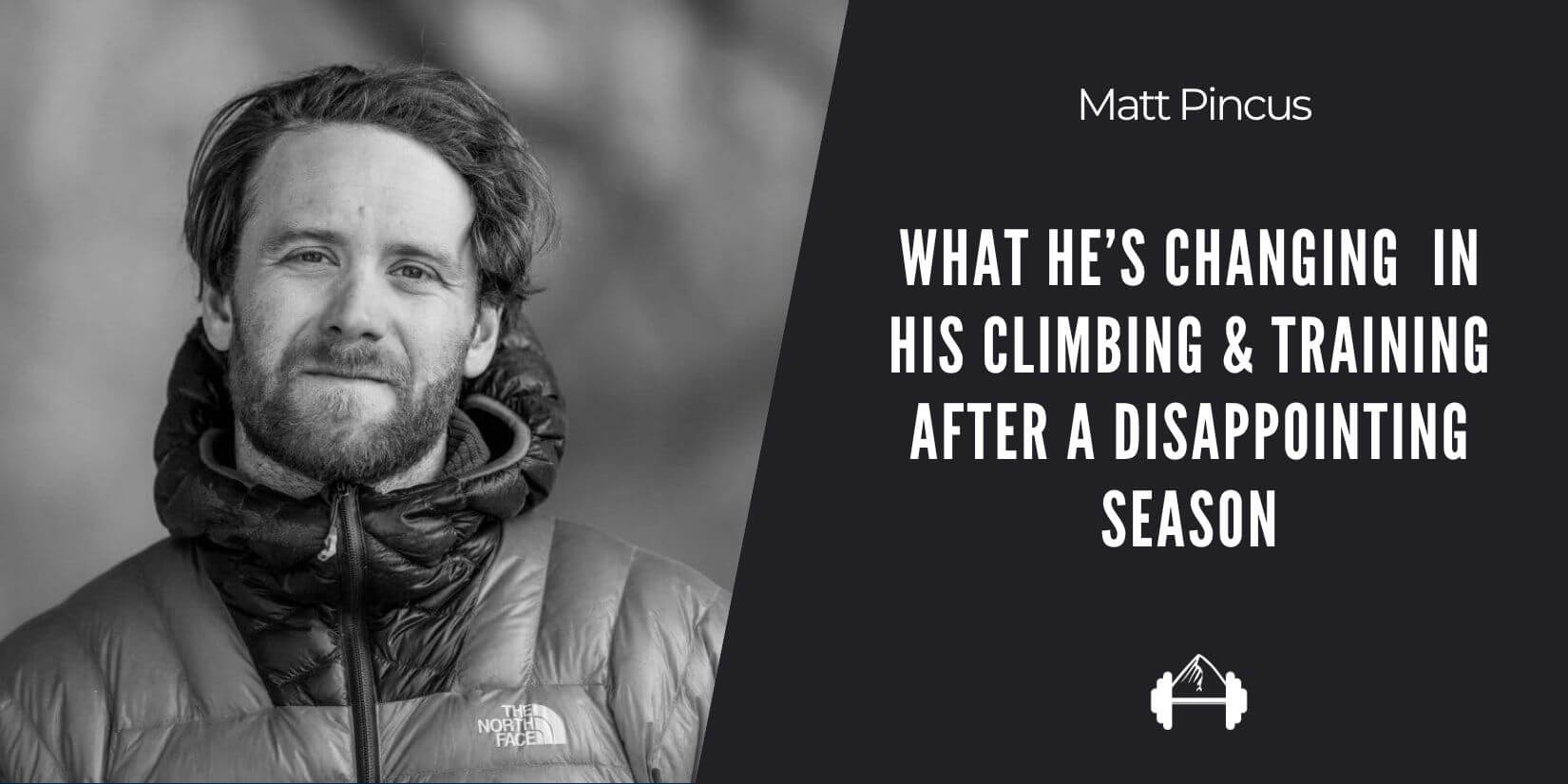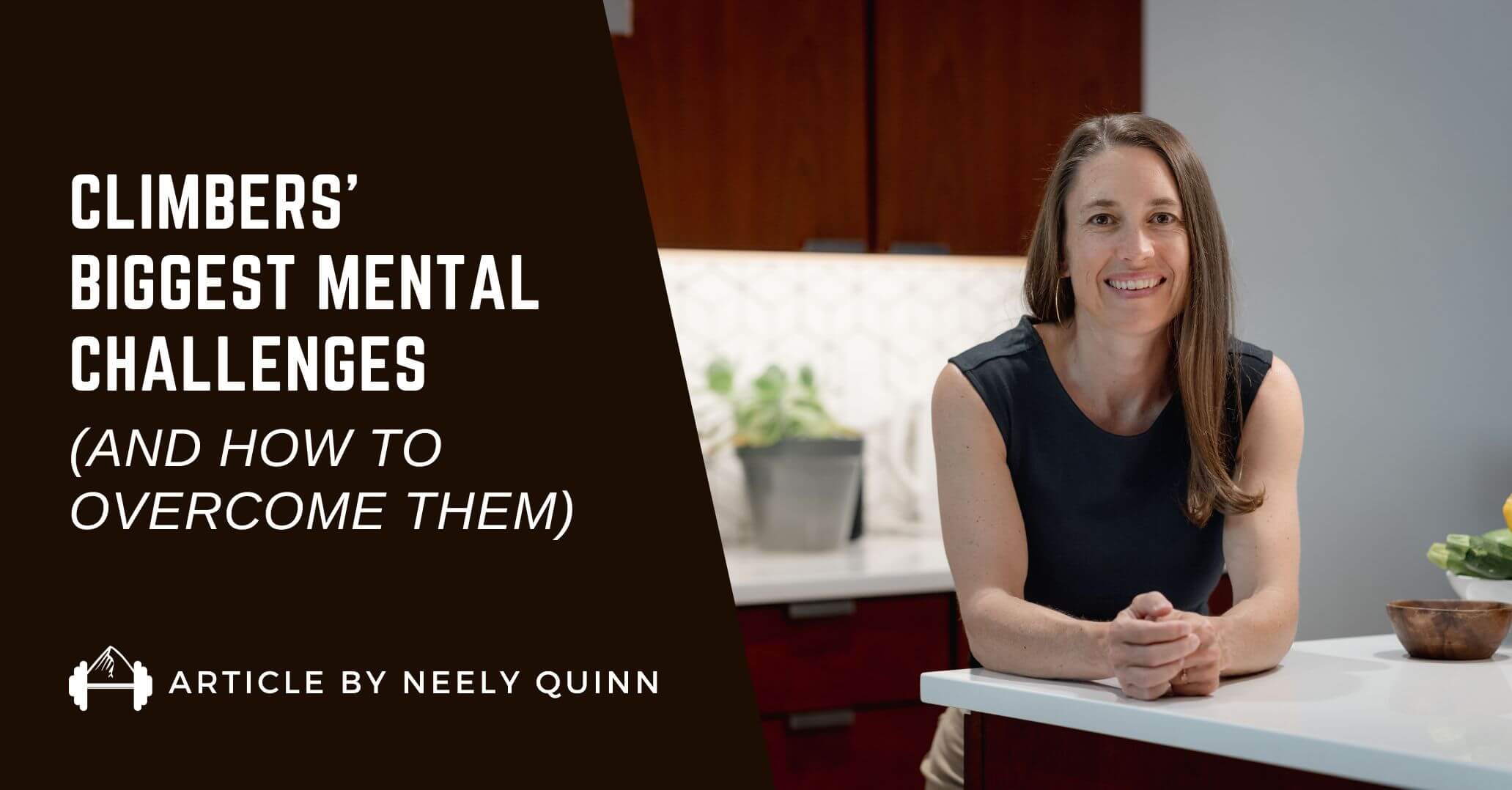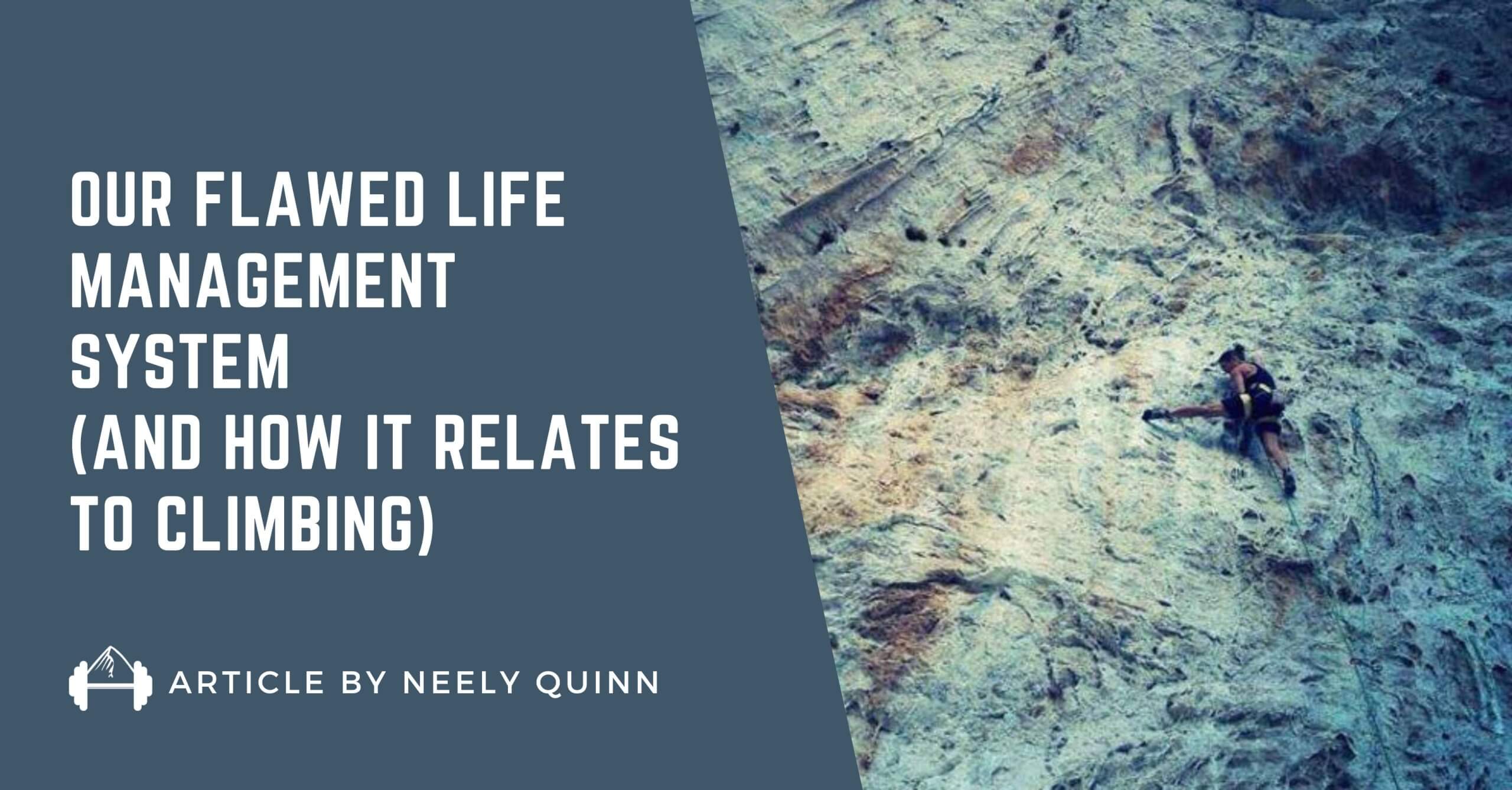Every month or so we do a life and climbing update on Matt, Alex or me, and this month is Matt’s turn! Read on to see what he’s been up to and what he’s learned about his climbing.
Enter Coach Matt Pincus…
Changing Things Up
My fall sport climbing season didn’t go well. Basically, the combination of seeping rock, unseasonably high temps, and some overall bad luck has meant that I didn’t send anything.
I wrapped up my season at the end of October and I haven’t tied into a rope a single day since then.
I’d be lying if I said I wasn’t frustrated.
I know some of the factors – like wet routes and triple-digit fall temps – were out of my control, but that doesn’t change the fact that I felt like I put a lot of effort into both my preparation for the season and the season itself without any tangible results. While I am as psyched as ever to climb, I also know that continuing to move from one hard route project to the next wasn’t the way forward.
It was time to change things up.
Enter bouldering around Lander, WY. When I got back home at the end of October, the weather was still really good and the last thing I wanted to do was spend the end of the fall season indoors with a long Wyoming winter looming. So switching climbing styles seemed like the obvious first place to start.
The good news is I had a great November filled with some local sends and a great couple of days revisiting boulders in Pawtuckaway, NH (a place I haven’t climbed in 13 years) while visiting family.
Off these successes and my re-invigorated psyche, what I am currently thinking a lot about is the value of changing things up. While simply switching climbing disciplines was a quick and easy solution, I think there’s value in proactively avoiding getting stuck in a rut – both from a performance perspective and from a training standpoint.
Getting stuck in a rut happens because we become comfortable with our habits and ways of operating within the sport. However, since we know that growth, progression, and learning in climbing come from pushing ourselves outside of our comfort zone, we should be vigilant in looking for areas where our habits primarily make us comfortable rather than helping us continue to improve.
To put it simply, do you always go climbing at the same areas and try the same difficulty routes?
How about in your training?
Do you always train on the same board, for the same amount of time, on the same level of boulders?
If you are getting better, staying healthy, and ticking your goal climbs, then you should 100% keep going and ignore the rest of this article. If, however, you find yourself stuck, injured, or not sending, then examining both your performance and training habits for areas that prioritize comfort over all else is a good place to start.
To make this discussion a bit more concrete, here are two areas of my outdoor climbing and two areas of my training where I think I’ve gotten comfortable and plan on changing things up over the winter.
Always Using the Same Warmups
I have long been a proponent of dialing in your warmups and using them session after session. Not only do I think this lets you warm up quickly, efficiently, and with minimal skin loss, but I also feel like it lets you really master climbs and viscerally feel how much easier repetition can make a climb.
Particularly with sport routes, I’ve been amazed at how routes that when I first sent them took multiple goes or days of effort can become reliable warmups I can do as a first pitch. I love this feeling of mastery and feel like it puts me in a confident and positive headspace to attack my projects.
While I still think there is value in this practice, it’s something I know I’ve taken too far.
At all the crags I frequent around Lander, I have “my warmups” and I pretty much never deviate from them. At some cliffs, this is because the available warmups are limited, but, at many others, this just isn’t the case.
So, to push myself outside my comfort zone, I plan to climb different and new-to-me routes as my warmups during this winter’s season in Sinks Canyon.
Not only will this give me a chance to climb many of the quality routes I’ve been putting off trying for years, but it will also give me the chance to dial in and really master a new crop of warmups. Seeing as this process of mastering a climb was what gave using the same warmups value in the first place, it seems like a good change to make.
Getting Sucked into Project-Level Routes
Anyone who has read my newsletters or listened to the episodes with me on the TrainingBeta Podcast is going to think I sound like a broken record here, but one of the things that I am working on changing up in my climbing is avoiding always projecting.
To put it simply, I really like trying hard routes. I like the process of figuring out the beta. I like the hard work that goes into doing links. I like celebrating bits of progress as wins. I like the mental pressure of trying to execute. None of these things are negatives and I generally think they have been huge contributors to the success I have had in climbing.
That said, there are lots of different ways to go climbing and while I love the projecting process it can start to make my days out feel scripted. One of my main takeaways from the past month of bouldering is just how much lower the commitment level is when it comes to trying a boulder versus a sport route.
In a typical day of sport climbing, I only leave the ground four to seven times. This makes every pitch feel extremely valuable and I often find myself not trying routes apart from my projects because it feels like it’ll “cost” me an attempt.
Contrast that with trying a boulder problem. All you have to do is throw down some pads and you can give it a try or two. If you like the problem, great. Keep trying. If not, you can move on without it really impacting your day.
As someone who is able to climb outside a lot, my goal is to bring a bit more of this casualness into my route climbing this winter to free up time for more second-tier routes. The project isn’t going anywhere and honestly a bit more sending sounds really nice.
Avoiding Pull-Strength Training
The weight room has been a large part of my training for years. I have written and talked extensively about the importance of covering the major human movement patterns – hinge, squat, press, and pull – in your training.
When I look over my training logs, however, I see a lot of hinging, squatting, and pressing but very little supplemental pull training. Over the years I have justified this to myself by saying things like, “I get plenty of pull training through my board climbing and I don’t have the time or energy to train everything.”
While there may have been some truth in statements like that, what it doesn’t account for is the fact that I like the feeling of hinging, squatting, and pressing. I feel good at them and I’m proud of my numbers in those areas. I can’t say the same about my pull strength which is precisely the reason I need to work on it.
I’m not saying that I’m going to stop training the other movement patterns, but I am going to commit to more consistent pull training and not letting it fall to the wayside in favor of being fresher for my next board session.
Doing All My Energy Systems Training Outdoors
My favorite part of living where I do is the fact that we have year-round access to outdoor climbing. As someone who loves climbing outside and whose goals are outdoors on rock, this has led to years where I let my outdoor sport climbing serve as all my endurance training.
Essentially, I boulder and lift indoors to keep my strength and power up, keep my fingers healthy on the hangboard, and do the very occasional power endurance block as a “top off” before big trips or major projects.
Ultimately, I think this is a great approach for climbers who have the time and ability to get outside regularly. That said, as someone who has also been stuck falling over and over again at the redpoint cruxes of several hard routes, it’s clearly time to reevaluate this approach.
When I transition back into route climbing mode starting in February/March, I can promise you I’ll be training endurance indoors in a more structured and systematic way.
Be Deliberate with Change
Hopefully, the above examples from my own climbing and training give you some ideas about how to evaluate your climbing routine and training habits to see if they are still serving you or if you are sticking with them just because doing so makes you comfortable.
That said, it’s really important for me to note that this isn’t a call for wholesale change. Don’t make changes to your climbing or training because something else looks new and shiny. If what you are doing is working, keep going.
If you do need to change things up, think these decisions through and have a concrete reason for every change. As always, remember that the specifics are less important than the principles and thought processes behind them.
Stay the course. Keep showing up.
Work with Matt on Your Own Climbing Performance
Whether you’re in the middle of your outdoor climbing season, you’re preparing for a big trip, or you just want to get better at rock climbing, Matt coaches climbers of all abilities on an individual basis, no matter where you are in the world.
He’ll sit down over Zoom and talk to you about your goals, your strengths and weaknesses, your time limitations, and the equipment you have available. After you talk, he’ll make you a program specific to your needs on the TrueCoach app that you can follow and communicate with him through.
He’s helped hundreds of climbers get smarter about their training and stronger overall. He’s super easy to work with, very smart, dedicated, extremely responsive and responsible, and he’ll get you the results you’re looking for without overtraining you.
Work with Matt as Your Coach
Or Try One of His Pre-Made Training Programs
If you’re not quite ready to sign up for one-on-one coaching with Matt but you do want his expertise and a structured plan, he designed both our Performance Bouldering and Performance Route Training Programs, which are super affordable, beautifully laid-out training plans you can access from your phone.
You get targeted performance climbing practice on routes or boulders, power endurance drills, and all kinds of other skill practice in each session. Plus you’ll get strength training sessions laid out for you using weights, bodyweight, and TRX.
There are 3 levels to choose from in either the bouldering or routes program, and you get access to Matt in free office hours once per month to ask any questions you have.
You can log your workouts in an online logbook so you can track your progress, and you can try the whole thing for free for 7 days.
Check Out the Bouldering Program
Check Out the Routes Program





Leave A Comment